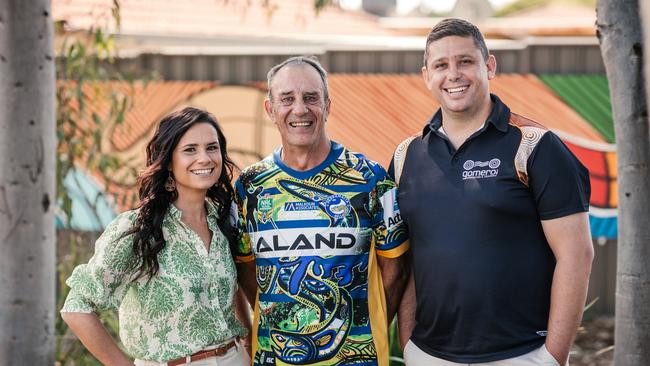NSW life expectancy: The average age of death in every NSW suburb
New data has revealed the average age people are dying in every suburb across NSW, as well as shocking divides where residents are dying far too young. Search your suburb here.
NSW
Don't miss out on the headlines from NSW. Followed categories will be added to My News.
It is the deadly divide splitting a regional community in half – and living on the wrong side of the tracks in Tamworth means the average age of death is more than a decade earlier than your neighbours.
New data from Torrens University Australia has revealed the average age of death of people in every suburb in NSW, with the tight-knit towns that make up the regional community of West Tamworth holding a cruel record of the lowest median age of death at just 64 years for women.
Meanwhile, their neighbours in the eastern Tamworth suburbs of Calala, Hillvue, and Kingswood live to an average age of 77 years.

Torrens University Australia public health development director John Glover told The Saturday Telegraph the data, which “still shocks” him despite more than three decades of research, shows the gap between disadvantaged communities and advantaged ones has widened since the early 1990s.
“The regional community of Tamworth has a significant divide between its communities when it comes to socio-economic status,” he said.
Professor Glover said suburbs in western Tamworth were some of the 415 suburbs across NSW were considered to have “young” average ages of death, with people living well under the median age of 74 years old.
“In 1989, the gap between the disparity between the average age of death of low socio-economic communities and wealthy communities was about 40 per cent,” he said.
“Despite all of our research, government funding, and preventive measures, that gap between the rich and the poor has doubled to 80 per cent.
“These numbers show poorer communities continue to experience premature mortality – while those in wealthier communities are living longer – it is distressing and disturbing.”
The health research director said several communities had seen significant drops in the average age of death “below 75 years” due to the rising number of young people killed in crashes on the state’s roads, as well as poorer health outcomes.
“While we have universal health coverage, economic and social support, as a state and a country we don’t address the reality of the average age of death directly.”

In Sydney’s inner suburbs, there is yet another stark divide, where towns in the inner city and southwest, including Camperdown, Enmore, Newtown, and Alexandria, had average death ages of just 69. In neighbouring Moore Park, Paddington, and Centennial Park residents live 16 years longer, to a median age of 85.
Social demographer Mark McCrindle of McCrindle Research said there were several “life factors” that impact life expectancy at a household level.
“One of the major factors we see impacting life expectancy is income and wealth,” He said.
“Your weekly or monthly salary can determine the types of decision you make day to day, which impacts your health: from the food you can afford to subscriptions to gym memberships and sporting groups.
“Meanwhile, wealth – specifically money in the bank of generational wealth – can determine whether you can afford to live a long, health life.
“Education, resulting in the type of employment you secure can also be a major factor on life expectancy.”

Mr McCrindle said mental health, connection with family and pyshical were also key factors.
Communities on Sydney’s north shore boast the oldest age of death averages in the state with the median age of women living to 90 in Willoughby, Hunters Hill, Ryde, and Macquarie Park.
In the upper north shore suburbs of Wahroonga, St Ives, and Turramurra, men live until the age of 86.
It comes as the data revealed men were outliving women in the western Sydney suburbs of
Agnes Banks, Berkshire Park, Londonderry, and Yarramundi by 6 months to the age of 73.
While in the Hunter suburbs of Seaham and Woodville, as well as the southwest Sydney communities of Claymore, Gregory Hills, and Varroville, men are living a year longer than women.


A NSW Health spokeswoman told The Sunday Telegraph a new “Future Health road map” has been developed to improve health and introduce preventive measures across the state over the next decade.
A key project, aiming to improve health outcomes is the ‘First 2000 Days Framework’, which aims to give children the best start in life from conception through to age five, while a specialist regional health plan was rolled out in 2022.
This decade long plan looks to strengthen the regional workforce to “enable better access to safe, high quality and timely health services”.
The project also looks to keep people healthy and well through prevention and education.



